Served with a red wine reduction sauce, this Japanese Hamburger Steak (Hambagu) is big on flavors. The meat is juicy and melts in your mouth. It‘s perfect to make in a hot frying pan either in the kitchen or on the grill!
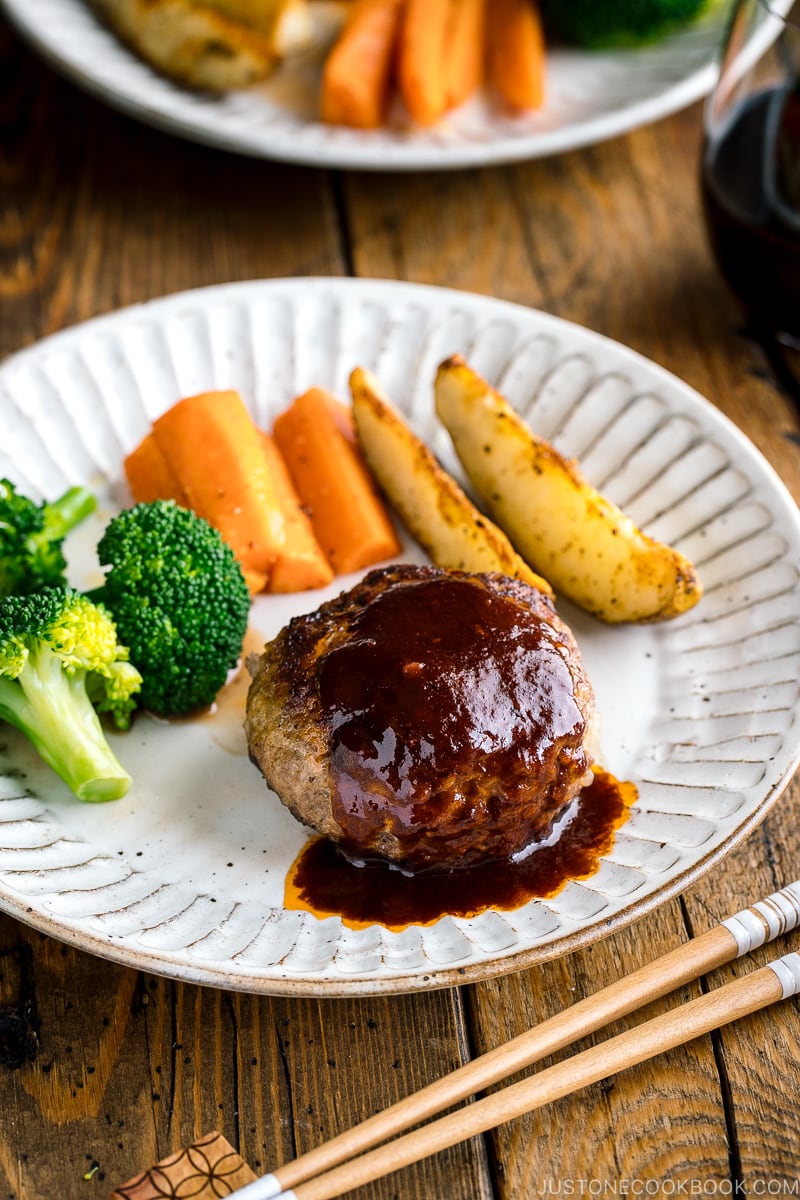
I still remember vividly how my mom and I spent many evenings making Japanese Hamburger Steak or Hambagu (ハンバーグ). If I was home, she would call me around 4:30 PM and always encouraged my presence in the kitchen. Unless I was in the middle of a novel that I couldn’t stop reading, I didn’t mind helping her out most of the time. That’s how I learned to cook Japanese food from her.
What is Hambagu
Japanese Hamburger Steak, or we call it Hambāgu (ハンバーグ) or Hambāgu Steak (ハンバーグステーキ), is a popular dish enjoyed both at home and at Yoshoku (Japanese style western food) restaurants. It’s a steak made from ground meat and usually served with rice rather than buns.
While researching facts about Hambāgu on Japanese Wiki, I learned that there is an American version of hamburger steak and it’s very similar to a dish called Salisbury Steak, which I’ve never tried before.
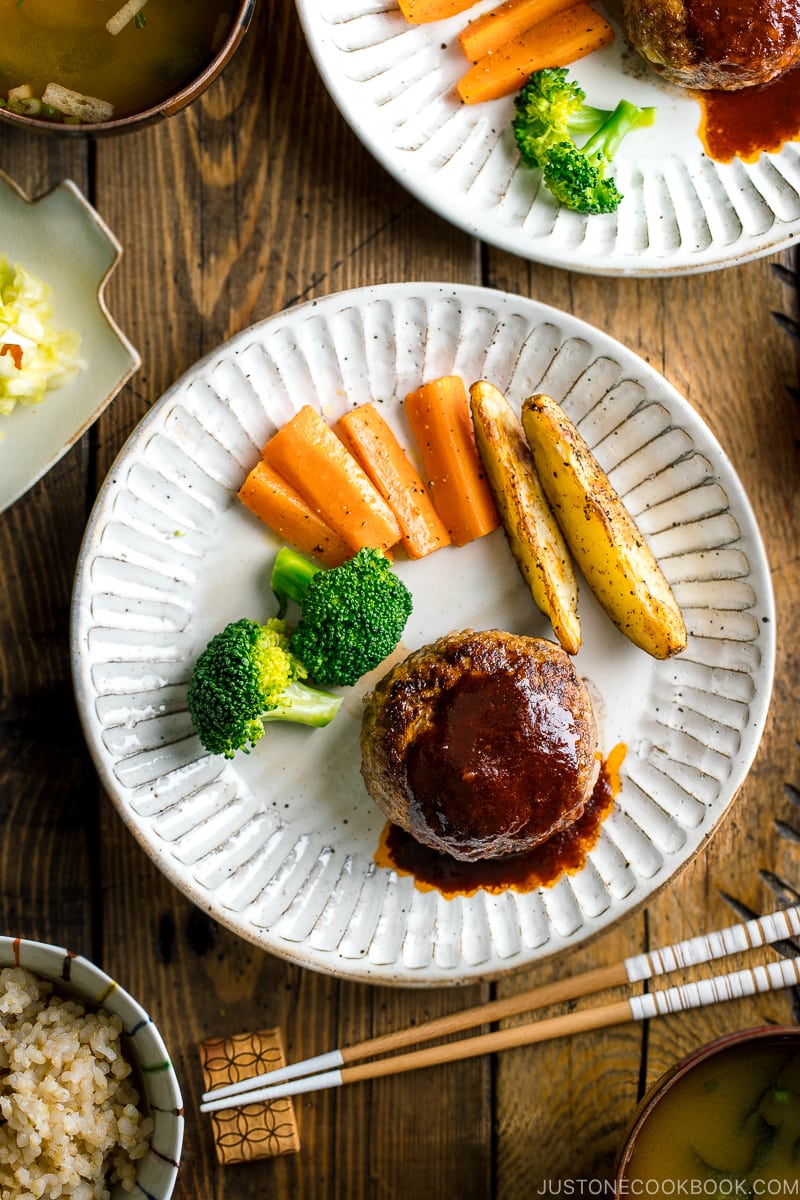
Variations of Japanese Hamburger Steak
The common theme for all these hamburger steaks is that they are made from a blend of minced beef and other ingredients.
There are many variations of Hambāgu in Japan, like Wafu Hambāgu (soy sauce-based sauce with grated daikon), Teriyaki Hambāgu, Demi-glacé Hambāgu, and more. You’ll also find different topping options, such as sautéed shimeji mushrooms and a fried egg.
Today I’m sharing the basic Hambāgu recipe with a delicious homemade sauce.
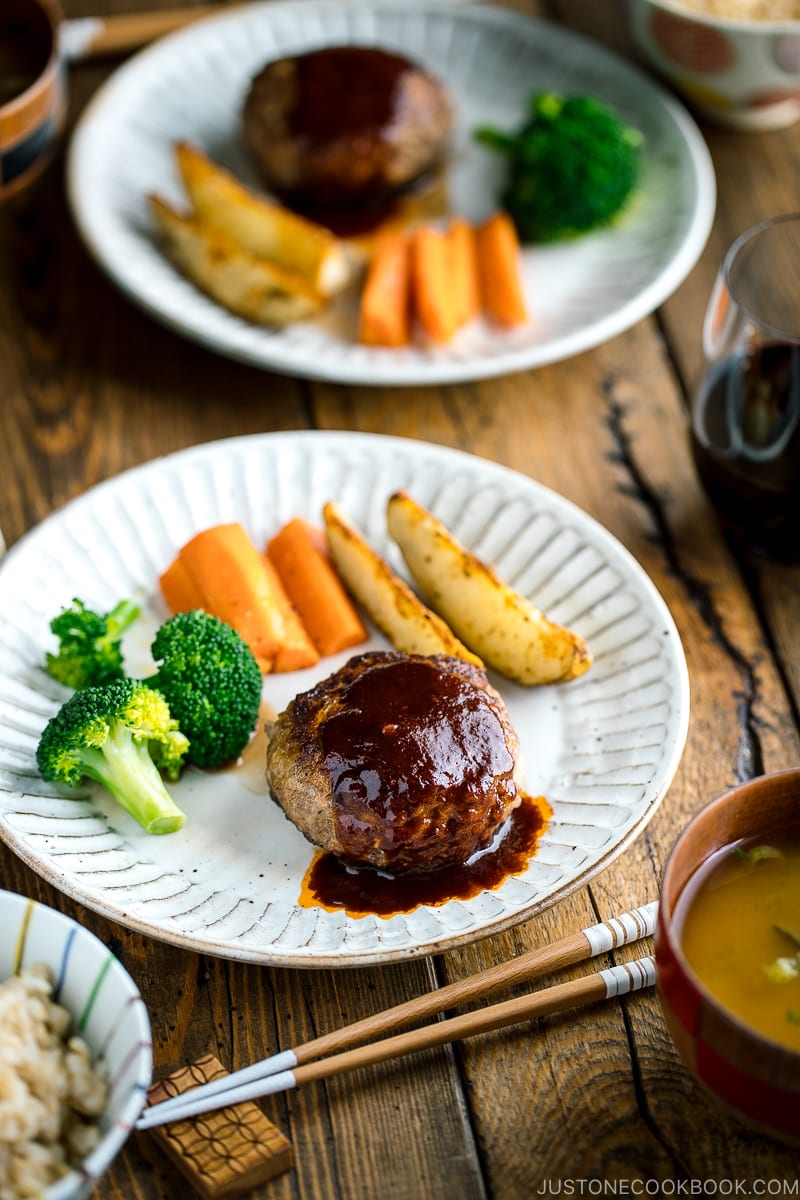
Use of Both Ground Beef and Ground Pork
Hambāgu in Japan is typically made from both ground beef and ground pork. Supermarkets in Japan sell a convenient package of both ground beef and ground pork (we call it Aibiki Niku 合いびき肉) so that we don’t have to buy the meat separately. The common ratio of Aibiki Niku is 7:3.
For this Hambagu recipe, you can decide the beef/pork ratio either 2:1 (8 oz/4 oz) or 3:1 (9 oz/3 oz).
We often use this Aibiki Niku for Menchi Katsu, Spaghetti Meat Sauce, Curry Doria (Rice Gratin), and Hambāgu recipes.
7 Tips to Make Perfect Hamburger Steak
To enhance the flavor of Hambāgu, below are a few important tips, which I learned from my mom. I also included a video on how to toss hamburger steak to force out the air pockets.
- Sauté onion slowly and then cool it down completely. The cooked onion will add natural sweetness to Hambāgu.
- Knead the mixture with your hand until it’s pale and sticky.
- Play catch, tossing meat mixture from your left hand to your right hand. Do this a couple of times in order to release the air inside. If you skip it, the hambagu will crack while cooking.
- Let the meat patties cool in the refrigerator for 20-30 minutes to solidify fats and take them out right before cooking.
- Indent the center of each patty with 2-3 fingertips to avoid explosion or crumbling of the meat patties when you cook. The meat will expand during cooking, and the indentation will disappear.
- Use wine for steam cooking and the delicious sauce. If you can’t consume alcohol, use beef/chicken stock instead.
- Cook the red wine reduction sauce in the same pan. The rich grease left in the pan adds another layer of flavor to the already juicy Hambāgu.

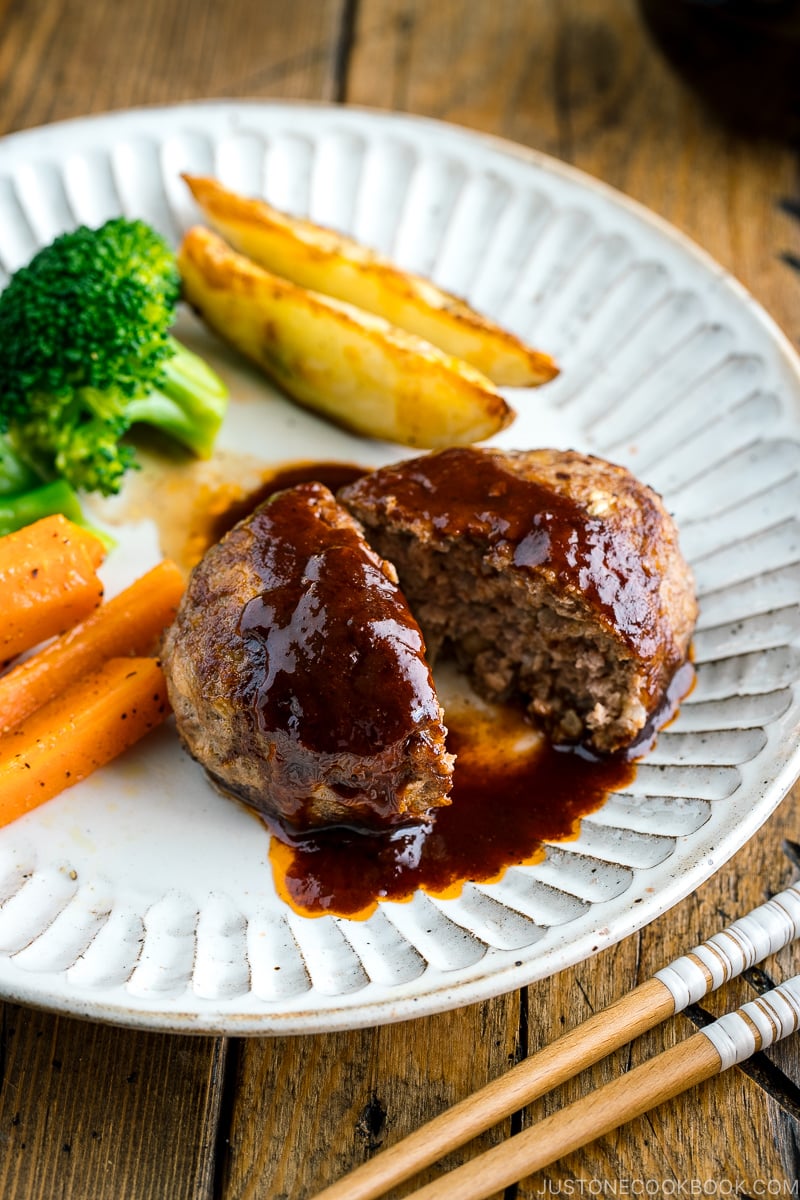
How to Serve with Hambagu
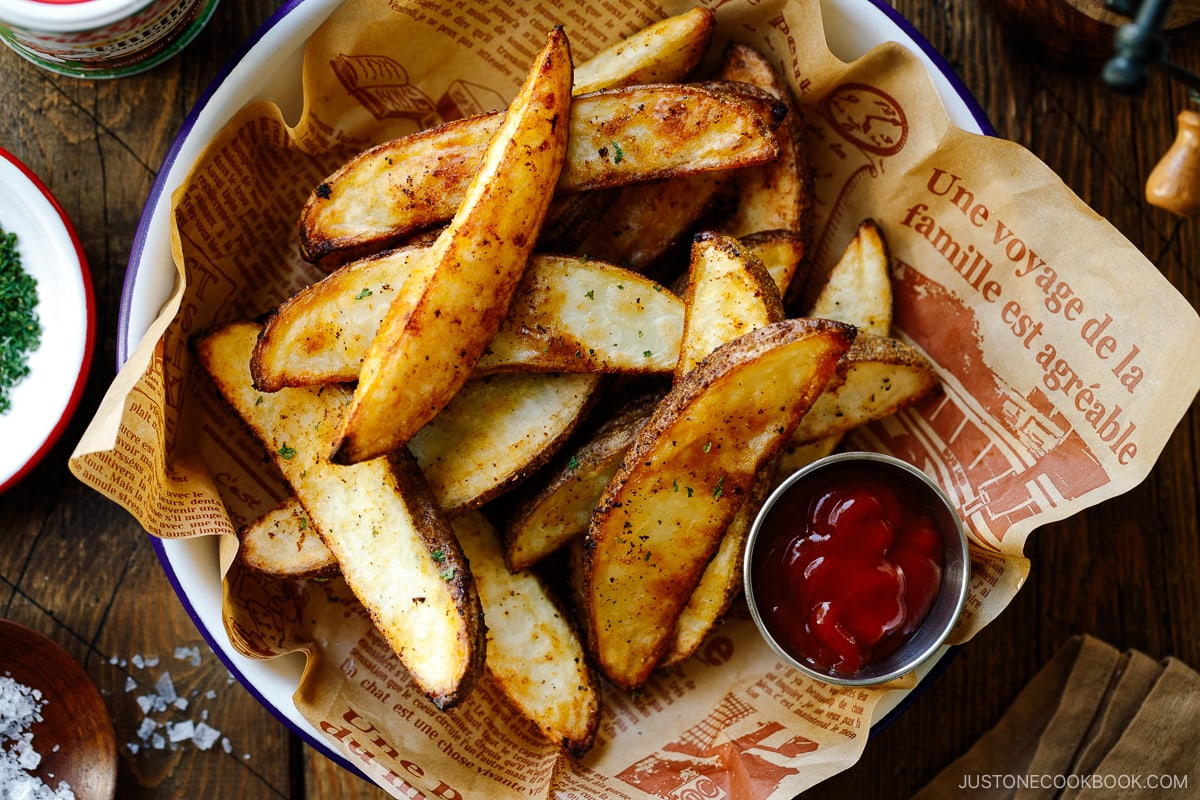
Serve the Hamburger Steak with Crispy Baked Potato Wedges, steamed broccoli, and sauteed carrots. If you want to make it into a Japanese-style meal, serve this dish with steamed rice and Miso Soup. You will have a fancy and extra special dinner that doesn’t cost a bomb. This is exactly the kind of recipe that calls for a bottle of red wine and a reason to celebrate.
Other Japanese Hamburger Recipes You’ll Enjoy
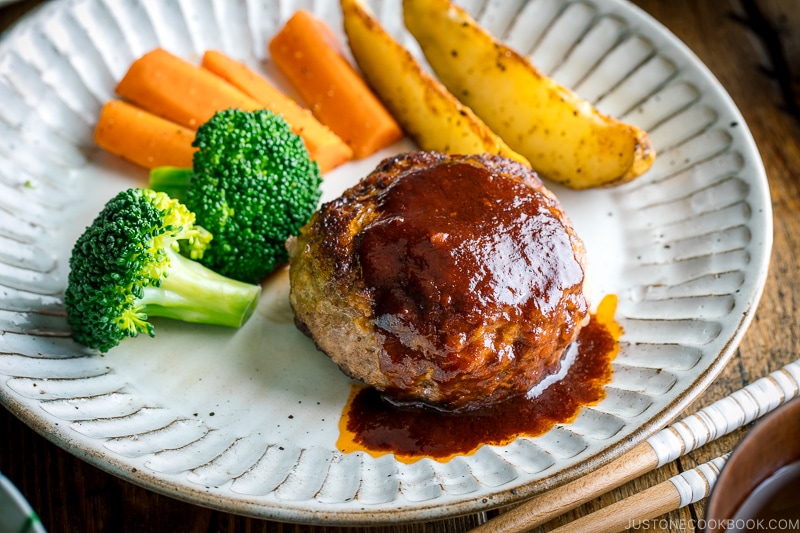
Wish to learn more about Japanese cooking? Sign up for our free newsletter to receive cooking tips & recipe updates! And stay in touch with me on Facebook, Pinterest, YouTube, and Instagram.
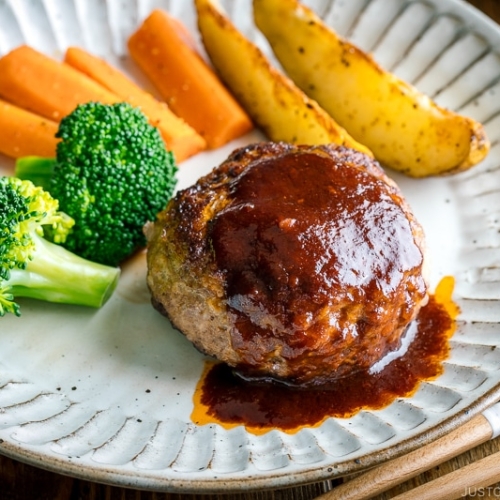
Japanese Hamburger Steak (Hambagu)
Video
Ingredients
For the Hambagu Patties
- ½ onion (5 oz, 142 g)
- 1 Tbsp neutral oil
- ¾ lb ground beef and pork combination (2 to 1 (8 oz/4 oz) or 3 to 1 (9 oz/3 oz) is a good beef-to-pork ratio)
- ½ tsp Diamond Crystal kosher salt
- freshly ground black pepper
- ½ tsp nutmeg
- ⅓ cup panko (Japanese breadcrumbs)
- 2 Tbsp milk
- 1 large egg (50 g each w/o shell)
For Cooking the Hambagu
- 1 Tbsp neutral oil
- 3 Tbsp red wine (for steaming; I use this mini wine; or substitute beef or chicken stock)
For the Sauce
- 1 Tbsp unsalted butter
- 3 Tbsp ketchup (to taste)
- 3 Tbsp tonkatsu sauce (or make Homemade Tonkatsu Sauce)
- 3 Tbsp red wine (I use this mini wine; or substitute beef or chicken stock)
- 3 Tbsp water
Instructions
Before You Start…
- Please note that this recipe requires 30 minutes of inactive resting time (patties in the refrigerator) in addition to the total active cooking time.
- Gather all the ingredients. If doubling the recipe, please cook one batch at a time in the pan.

To Make the Hambagu Patties
- Mince ½ onion finely (we call this cutting technique mijingiri in Japanese). Lay the cut onion flat side down on the cutting board. With the knife tip pointing toward the root end, make ⅛-inch vertical slices to within ½ inch of the root end. With the knife edge toward the root end, make ⅛-inch horizontal slices, again keeping the root intact.

- Finally, make perpendicular cuts down through the vertical slices you made. If you need to chop the onions finer, run your knife through them using a rocking motion. Hold down the tip of the knife; otherwise, the onions will go flying around the room.

- Heat a large pan over medium heat. When the pan is hot, add 1 Tbsp neutral oil. Then, add the onions.

- Sauté the onions until tender and almost translucent. Transfer to a large bowl and let it cool.

- Once the onions are cool, add ¾ lb ground beef and pork combination to the bowl. Add ½ tsp Diamond Crystal kosher salt, freshly ground black pepper as you like, and ½ tsp nutmeg. Tip: You can make hambagu with 100% beef, but it will not be as juicy and tender as combining the two meats.

- Add the ⅓ cup panko (Japanese breadcrumbs), 2 Tbsp milk, and 1 large egg (50 g each w/o shell).

- Start mixing it all together with a silicone spatula or spoon.

- Then, switch to mixing by hand and knead the mixture until it‘s sticky and pale.

- Divide the mixture into 4 portions (4 oz, 113 g each) or 6 smaller portions. Scoop out one portion.

- Toss it from one hand to the other repeatedly about five times in order to release any air inside the mixture (see the video link above). Tip: Without releasing the air inside, the hamburger steaks will likely crack while cooking.

- Make an oval-shaped patty and place on a tray or plate. Repeat with the remaining portions. Cover the patties with plastic wrap and keep them in the refrigerator for at least 30 minutes before cooking so that the meat combines well and the fat solidifies.

To Cook the Hambagu
- Heat a large pan over medium heat. (Cook one batch at a time if you‘re doubling the recipe.) When the pan is hot, add 1 Tbsp neutral oil. Place the patties gently into the pan. Indent the center of each patty with two fingers because the centers will rise with the heat.

- Cook the patties until browned on the bottom side, about 3 minutes. Then, carefully flip and cook for another 3 minutes until browned.

- Add 3 Tbsp red wine and reduce the heat to low. Cover the pan with a lid and cook for 5–7 minutes to thoroughly cook the inside of the patties (adjust the cooking time depending on the thickness of the patties).

- Uncover and check that it‘s fully cooked by inserting a skewer; if clear juice comes out, it‘s done. Increase the heat to medium to let the alcohol finish evaporating. When it’s almost finished, transfer the hamburger steaks to individual plates. Do not wash the pan as you will make the sauce next using the pan juices.

To Make the Red Wine Reduction Sauce
- To the same frying pan, add the ingredients for the sauce (for one batch): 1 Tbsp unsalted butter, 3 Tbsp ketchup, and 3 Tbsp tonkatsu sauce. Tip: Since some ketchup is sweeter than others, adjust the amount to taste. For the tonkatsu sauce, you can substitute Worcestershire sauce and sugar in a pinch.

- Add 3 Tbsp red wine and 3 Tbsp water to the pan.

- Mix well together and bring the sauce to a simmer over medium heat; let the alcohol evaporate.

- When the sauce thickens (and you can draw a line on the bottom of the frying pan with a spatula), remove from the heat. Drizzle some sauce over the hamburger steaks.

To Serve
- Pour the remaining sauce into a small bowl or jar and bring it to the table for serving. We typically serve Steamed Rice, Homemade Miso Soup, Crispy Baked Potato Wedges, sauteed carrots, and steamed broccoli or a salad with this meal. Hambagu also goes well with Japanese Potato Salad and Corn Potage (Japanese Corn Soup).
To Store
- Transfer the leftover hamburger steaks to an airtight container and let them cool completely. You can store them in the refrigerator for up to 3 days and the freezer for up to a month.
Nutrition
Editor’s Note: The post was originally published on December 17, 2012. The content has been updated in August 2017. The post has been updated with a new video and images in June 2020.
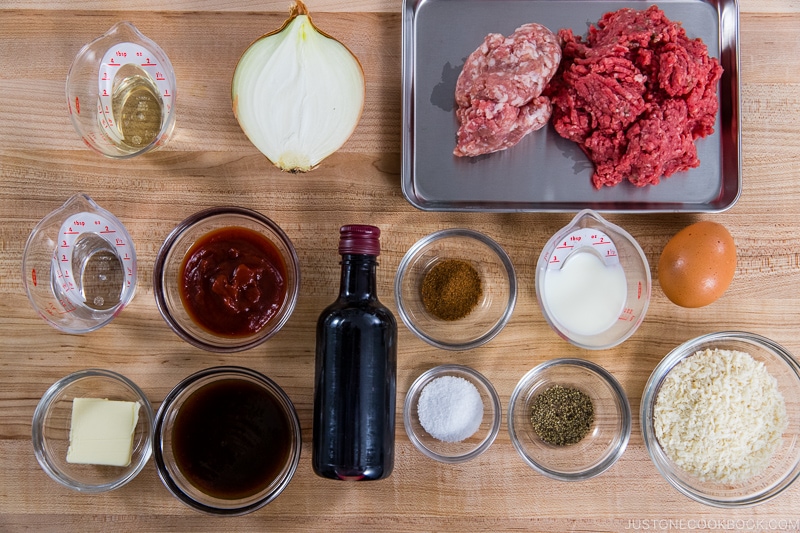
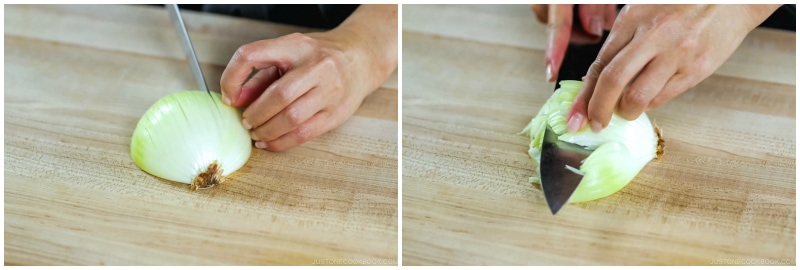
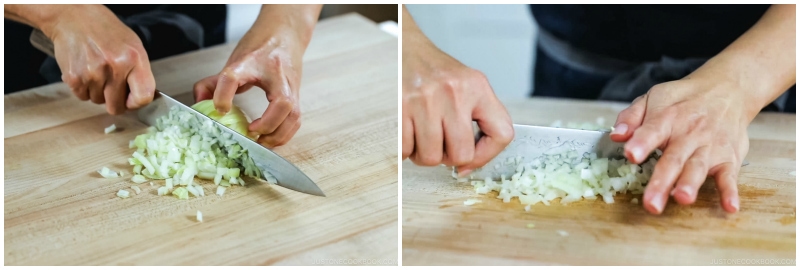
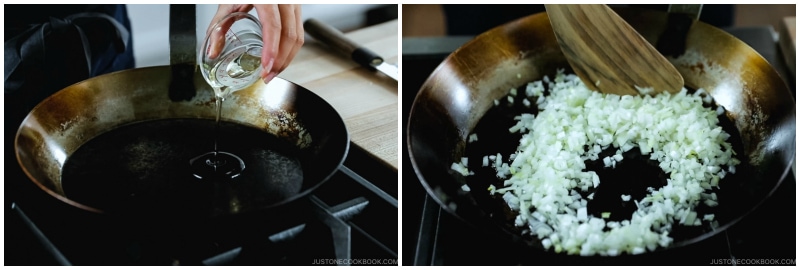
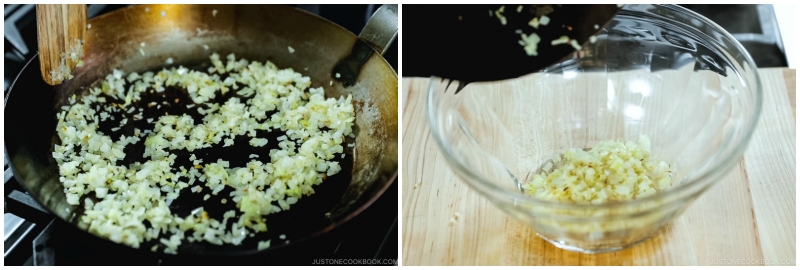

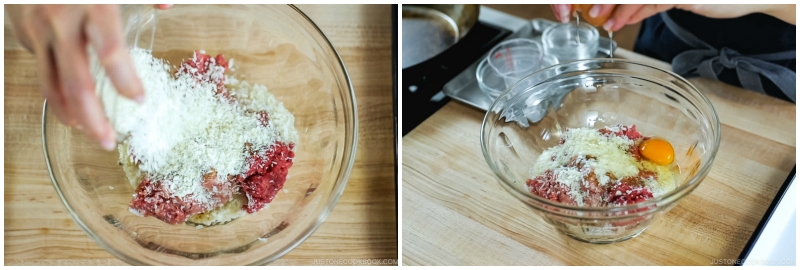
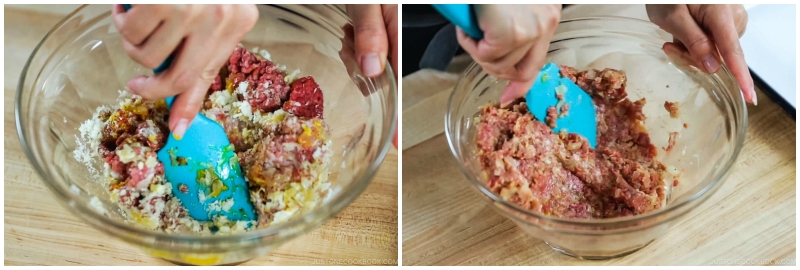

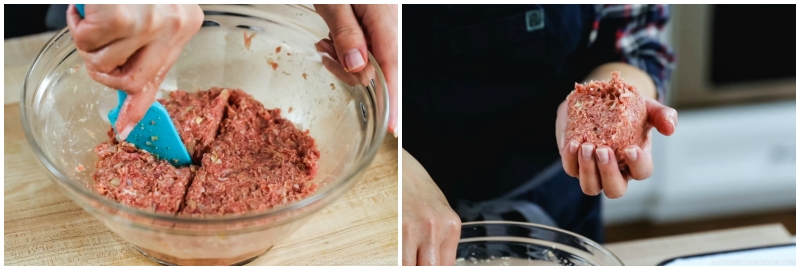

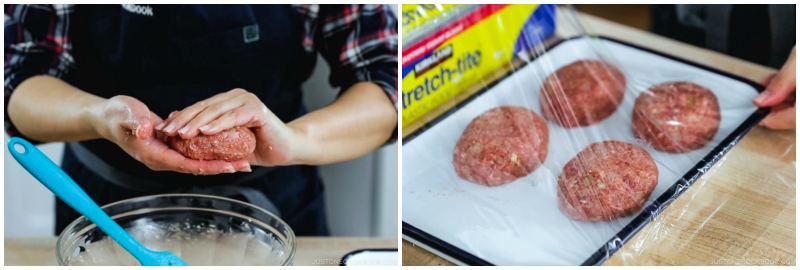
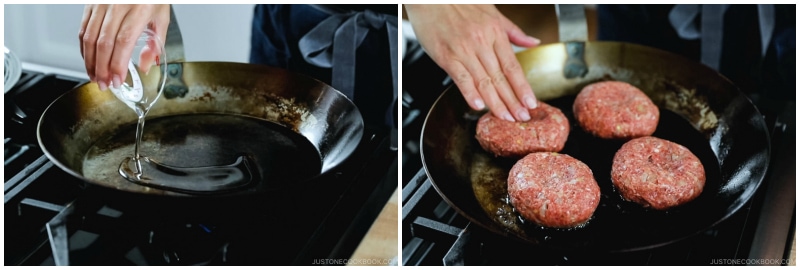
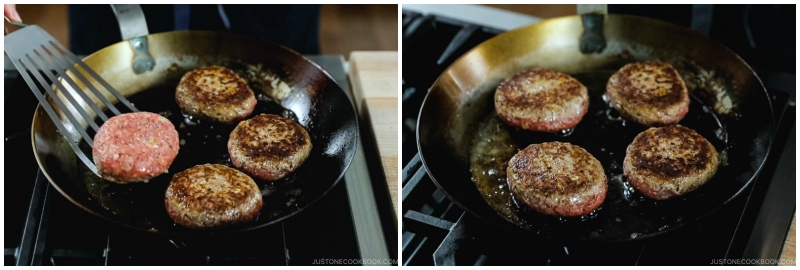
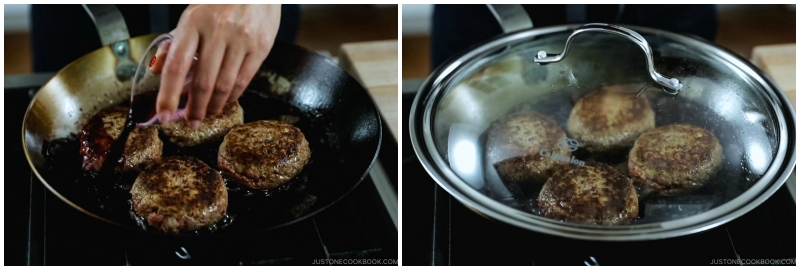
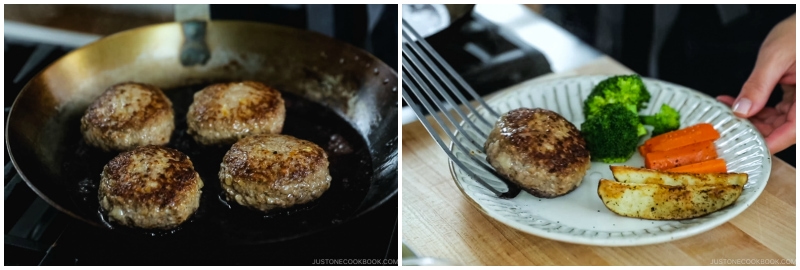
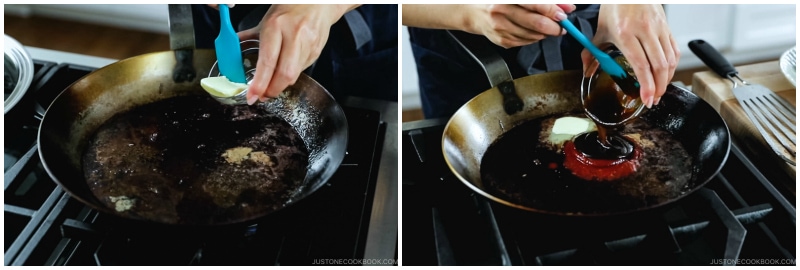
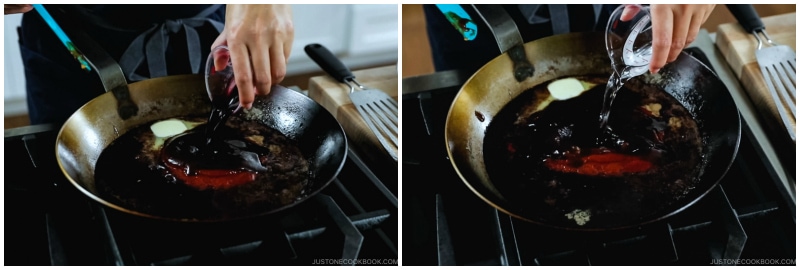
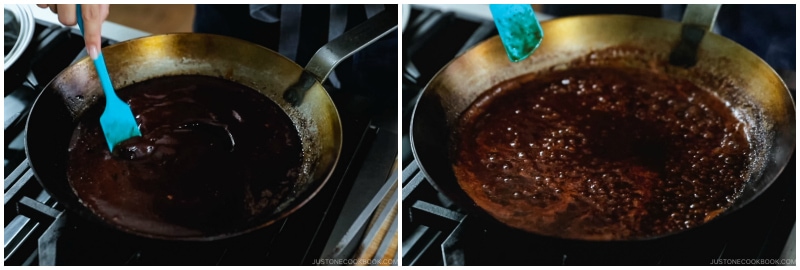



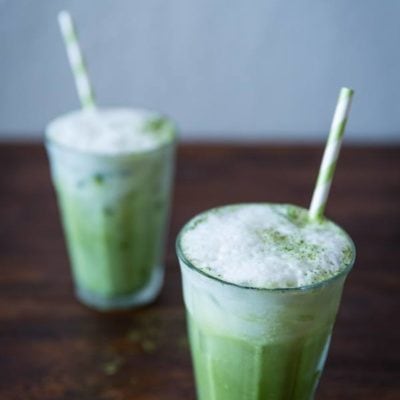

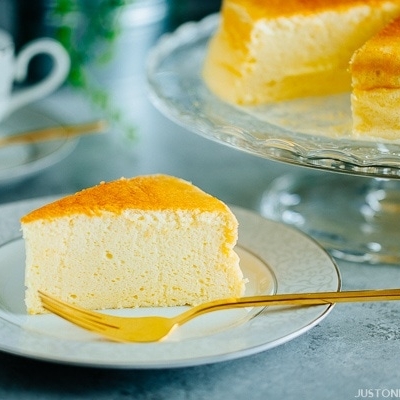


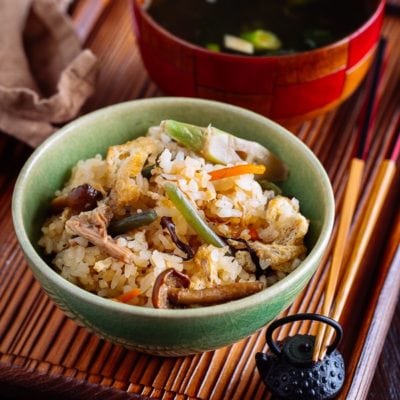
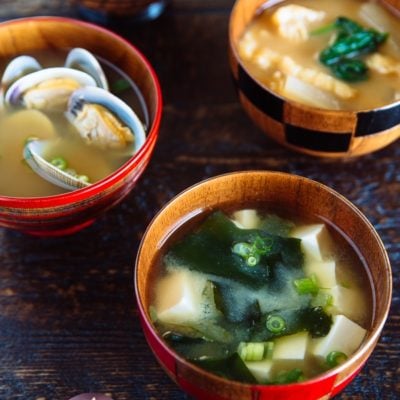


I just made this tonight and it was delicious! I was able to try the same dish at a local izakaya just the night before and this recipe tasted identical, if not better! I did, however, have one question: Would the flavor profile change drastically if I used sake instead of red wine?
Hi Edward, Thank you so much for trying Nami’s recipe and for your kind feedback.
The red wine provides acidity to the sauce, while the Sake has a softer flavor. We hope this was helpful!
Hi. Can I store the raw patties in the freezer after putting them in the refrigerator for 30 minutes? I wanted to cook and eat them about 2 weeks later.
Hi Bob, Thank you so much for trying Nami’s recipe!
We recommend cooking these patties before freezing them. Uncooked patties will lose quality throughout the defrosting process, becoming soggy and changing in flavor and texture.
We hope this helps!
I see, I’ll do that then. Thanks. 🙂
One more thing – what are the different ways that I can defrost them without losing flavor or ruining the texture?
Hi Bob, That is an excellent question! The microwave is the best way to defrost. Adjust the wattage to 600 watts and cook for 1-2 minutes, or until the Hambagu is tender. You may alternatively steam-cook frozen cooked Hambagu for about 5 minutes in a skillet with a little water or white wine.
We hope this helps!
I absolutely love this recipe however I noticed my sauce tends to be oily and it separates? Idk if it is the brand of butter I use or because of the left over oil and juices from cooking the same sauce in the same pan as my burgers.
Any advice is much appreciated!
Hi Tina, Thank you so much for trying Nami’s recipe! It sounds like your ground meats were a little too fatty. After cooking the hamburger, you may wipe away the excess oil from the skillet with a paper towel or try using leaner ground meats next time. We hope this helps!🙂
I made minature patties for habagu nigiri, and my kids loved them! Thanks!
Hi Kari! What a great idea!💡 We are glad to hear the kids enjoyed them.
Thank you for trying Nami’s recipe and sharing your idea with us. Happy Cooking!
Thank you for such a great recipe! Can you make bigger batch and keep them warm in the crock pod? Thank you.
Hi Keiko! Thank you for trying Nami’s recipe and for your kind feedback!
We’re not sure how long you will keep them in the crock pod, but the heat will dry out the Hambagu. If you can keep the moisture inside the pot, it should be fine for several hours.
Another option is to turn this into Nikomi Hambagu (Simmered Hambagu). Make demi-glace sauce and place it in the crock pot with Hambagu.
https://www.justonecookbook.com/demi-glace/
We hope this helps!
Thank you for the great idea! I will give Nikomi Hambagu method a try! 🙂
You are welcome, Keiko!
We hope this works out well for you.☺️
This recipe as well as others on this website is wonderful. This is even better than the hamburgro from my local Japanese snack shop. Legit recipe.
Hi Esther! Thank you for reading Nami’s post and for your kind feedback!
We are so happy to hear you are enjoying many recipes from our site. Happy Cooking!
I loved this so much I want to pack it for bento, but how do I freeze/store/reheat the sauce to pack it?
Hi Cheryl, Thank you for trying Nami’s recipe!
You can place the sauce in the airtight container and freeze it. Then defrost in the small pot over low heat. (If you use a microwave, make sure to cover it and use defrost mode or lower power to avoid splashing.) You can also defrost them in a refrigerator and warm them up before you pack them for Bento.
We hope this helps!
I made this recipe vegan by replacing hamburger with beyond meat, pork with beyond sausage, milk with oat milk, butter with plant butter, and egg with chia “egg”. I made all the sauces from scratch, and also had to replace the panko bread crumbs with crushed corn cereal due to a gluten allergy. With all this replacing, I was worried it wasn’t going to come out right, but man, it really worked so well! I followed your recipe and methods exactly, and was blown away by the result! I seriously wanted to scream because it was so tasty! Totally saving this to make again later. Really really good recipe!
Hi Spammy, Awesome! Thank you very much for trying Nami’s recipe and sharing your cooking experience and tips with us.
We are so happy to hear your vegan version came out so delicious!
Happy Cooking!😊
Thank you for the recipe 😊 tried it yesterday and it’s oishi!! In fact ive tried many of your recipes (yoshiniya gyudon, chicken katsu – to name a few) and they are all amazing. Thank you for the easy yet precise instructions, now i can fixed my japanese food cravings while waiting for japan border to open 😄
Hi Nadia! Aww. Thank you very much for trying Nami’s recipe and for your kind feedback!
Nami and all of us at JOC are so glad to hear that you’ve been enjoying the recipes and everything else that we share. It means so much to us.
Happy Cooking!
My daughter is allergic to milk. Do you any suggestion for the substitution? The hambagu looks great btw, cant wait to try it!
Hi Yasmin! Thank you very much for reading Nami’s post and trying her recipe!
You can replace the milk with water or other milk like oat milk, soy milk, etc.
We hope you and your family enjoy homemade Hambagu!
I am allergic to tomato. can I replace the ketchup in the sauce with something else?
Hi Wendi, Thank you very much for trying Nami’s recipe!
Sure, you can replace it with another type of brown sauce. Just for your information, Tonkatsu sauce also contains tomato, so you might want to skip that too.
Another option is to use a different type of sauce for Hambagu. How about this Wafu Hambagu? https://www.justonecookbook.com/wafu-hambagu-japanese-hamburger-steak/
We hope this helps!
@Wendi Me too! If you can get your hands on a bottle of Nomato Ketchup, it works well for the ketchup component of many Japanese sauces. If not, I’ve had good luck making my own by following a canning recipe for ketchup but using a mix of canned carrots and beets with extra lemon juice until the acid balances the sweet, it does help if you have someone who can taste test for you if it’s not a recent allergy.
try banana ketchup it’s very good, jufran is the brand
Thanks for the recipe! It’s delicious! I’m curious though, what is your recommendation for how to cook the hambagu and sauce if I’m doubling or tripling the recipe and can’t fit all of the steaks in the pan at one time? Should I cook all of the steaks and then make all of the sauce, or should I do one round of steaks, one round of sauce, then the next round of steaks and sauce, etc.?
Hi May! Thank you very much for reading Nami’s post!
The best way is to use two pans. You can also save the grease from the first batch into a bowl, and making the sauce all together at the end will work well too.
We hope this helps!
Hi Nami! Made this hambagu recipe for dinner tonight and it was yummy!!😋 This takes me back when I was in Japan 3 years ago my obasan made hambagu on my last night there. I remember trying to help her out with the kneading part but I got tired fast😆 (She’s a strong woman and I miss her). Then I was sad because I was looking forward to eating the leftovers but there was no time lol. I’m glad for this recipe! Thank you!
Hi Mariko! Thank you very much for reading Nami’s post!
We hope you enjoy homemade Hambagu soon. Happy cooking!😊
Hi, Can we leave the raw patty in the fridge overnight? Just wondering cos there’s raw eggs in it.
THank you
Hi Steph, Thank you very much for trying Nami’s recipe!
We don’t recommend store raw patty in the fridge. Instead, please cook them first and let them cool completely to store.
You can store up to 3 days in the refrigerator or up to a month in the freezer.
We hope this helps!
This is practically a Salisbury steak recipe.
Hi Davos! Thank you very much for reading Nami’s post!
This recipe does not simmer the patties with gravy, and it would be a bit different from the Salisbury steak recipe.
We hope you will give it a try! 😊